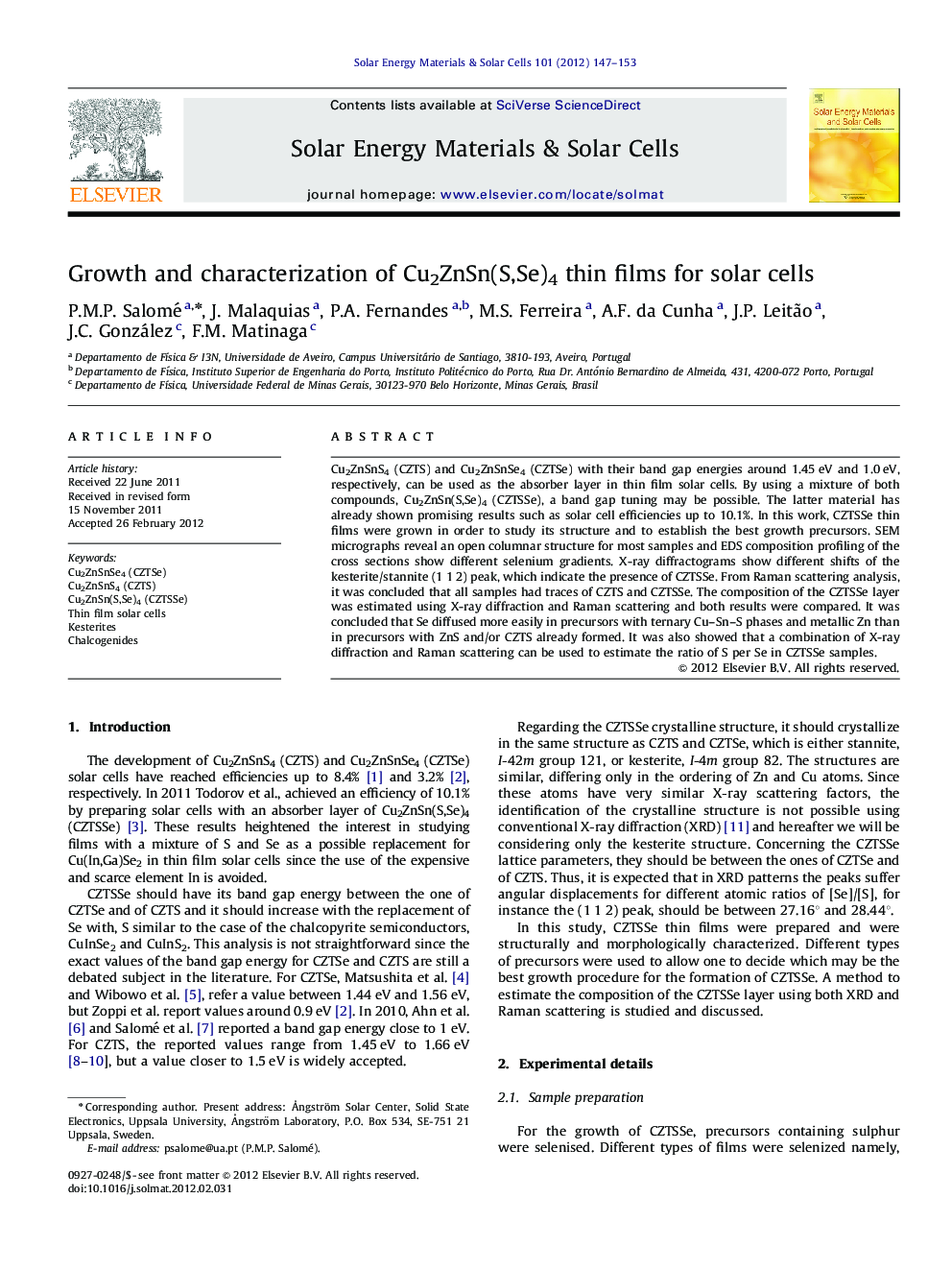| Article ID | Journal | Published Year | Pages | File Type |
|---|---|---|---|---|
| 79288 | Solar Energy Materials and Solar Cells | 2012 | 7 Pages |
Cu2ZnSnS4 (CZTS) and Cu2ZnSnSe4 (CZTSe) with their band gap energies around 1.45 eV and 1.0 eV, respectively, can be used as the absorber layer in thin film solar cells. By using a mixture of both compounds, Cu2ZnSn(S,Se)4 (CZTSSe), a band gap tuning may be possible. The latter material has already shown promising results such as solar cell efficiencies up to 10.1%. In this work, CZTSSe thin films were grown in order to study its structure and to establish the best growth precursors. SEM micrographs reveal an open columnar structure for most samples and EDS composition profiling of the cross sections show different selenium gradients. X-ray diffractograms show different shifts of the kesterite/stannite (1 1 2) peak, which indicate the presence of CZTSSe. From Raman scattering analysis, it was concluded that all samples had traces of CZTS and CZTSSe. The composition of the CZTSSe layer was estimated using X-ray diffraction and Raman scattering and both results were compared. It was concluded that Se diffused more easily in precursors with ternary Cu–Sn–S phases and metallic Zn than in precursors with ZnS and/or CZTS already formed. It was also showed that a combination of X-ray diffraction and Raman scattering can be used to estimate the ratio of S per Se in CZTSSe samples.
► Cu2ZnSn(S,Se)4 thin films were prepared using different precursors. ► A method of estimating the Se and S ratio was established. ► Raman and XRD measurements are a valuable combined tool. ► A se grading was obtained in several films.
